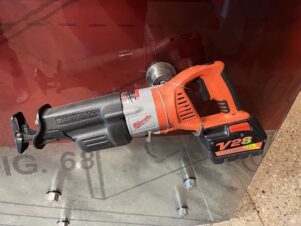By Robert C. O’Brien, Owner of Technical Heating Co. LLC
 Do you do a heat loss calculation on every replacement job? Should you? Everyone will say you absolutely, positively a must! At the risk of being excommunicated from the Hydronic Brethren, I’ll say not always, and, depending on the type of work you do, maybe never. How can that be possible?
Do you do a heat loss calculation on every replacement job? Should you? Everyone will say you absolutely, positively a must! At the risk of being excommunicated from the Hydronic Brethren, I’ll say not always, and, depending on the type of work you do, maybe never. How can that be possible?
I live and work on that lengthy, narrow atoll that Dan Holohan refers to as the Isle of Long, aka Long Island. It’s full of subdivisions built mostly between 1950-1980; these developments are invariably comprised of a very few models of homes. Ranches, capes and colonials primarily with a smattering of variations on that theme, splanches, high ranches and split levels. Probably 90% of the homes will fit one of these categories.
Back in the early ’80s I was told a Manual J was the proper way to size boilers and I decided that I would do it that way. The Manual J is very aptly named because it entails a lot of manual labor to gather the data and then do the calculation the old school way on worksheets. After slightly more than four hours into it, I arrived at a number that was approximately one third that of the existing boiler? Impossible! I did the math again with the same result. I thought my scientific approach would impress the prospective client and win me the job, not quite! I presented my proposal to the homeowner along with the heat loss worksheet showing a boiler size of 59,000 BTU/hr. It wasn’t received very well. After he stopped laughing and regained his composure, he showed me the three other quotes he had gotten. The existing boiler was 160K, the quotes were from 160-225K — all from reputable local companies, who at that point in time had been in business a lot longer than me. Long story short, he went with the company proposing the 225K boiler. “That way it doesn’t have to work as hard”
That turned me off heat loss calculations for quite awhile, until I got my first computer, an IBM XT. Some very expensive heat loss software and I was back in the game, only now with very official looking reports printed with my daisy wheel printer! I had a little bit better luck this time around, and while not everyone was buying this method of boiler sizing, enough were. I’d be lying if I wasn’t nervous when the first stretch of design temp weather set in but amazingly enough, no complaints! I started doing quite a few with the new computer but after awhile I noticed something: the numbers were almost all the same. No sense spending time measuring another ranch when you’ve already done 10 of them and they are all within 5% of each other!
There was and still is a very substantial proportion of oil heated homes on Long Island, and unfortunately, there aren’t a lot of choices size wise in oil boilers. Even today, 65K is about the smallest and many manufacturers smallest are in the 85K range. Doesn’t make a lot of sense measuring a house you know from doing many heat loss calcs on similar homes is less than 50K when the smallest boiler available is 85K!
Yeah, but what about the oddball home? The mid-’80s contemporaries or the circa homes? I have an answer to those as well and no measuring required! You need some information; the heating degree days over a known period of time; I’d recommend a year and the fuel consumption over that same time period. Degree days can be found at http://www.weatherdatadepot.com/
Step 1. Add up all the BTUs of the fuel you used and multiply by the AFUE rating of your heating appliance. A gallon of oil has 139,000 BTUs/gallon, a therm of natural gas has 100,000 BTUs/therm, and gallon of propane contains 91,000BTUs/gallon. Some gas utilities measure their consumption in CCF, which is 100 cubic feet, which is 102,000 BTUs
Step 2. Divide the total number of BTUs by the number of heating degree days. The result is a measure of how many BTUs your home lost per Heating-Degree-Day. Now divide that result by 24 to obtain the number of BTUs your home loses per heating-degree-hour. Lastly, multiply the result by the difference between 70°F and the design temp. For example, if the design temp is 0°F, then the difference you multiply your heating-degree-hours by is 70°F.
An example:
Home using 1000 therms/year in a 80% boiler in a 6000 Degree day climate per year
1000 x 100,000 ( BTU per therm) = 100,000,000 BTU’s
100,000,000 x .80 (AFUE) = 80,000,000
80,000,000 ÷ 6000( Degree Days) = 13,333.33
13,333.33 ÷ 24 (hours per day) = 555.555
555.555 x 70 ( desired indoor delta T) = 38,888 BTU/Hr
38,888 = heat loss of home
A couple of big advantages to this system, it gives you an actual heat loss on an actual home, not a calculation based on factors that may or may not be correct. How do you know the infiltration or do anything other than guess at an R value? No tape measure required! There a few caveats, however; if they use supplemental heating, mini split heat pumps, pellet stoves, etc., the number will not be correct and depending on how much they supplemented may not even be close.
Caveat number two: they kept the house colder than they would have liked due to fuel cost; this one is pretty common in oil and propane heated homes and will skew the number lower because of the abnormally low fuel consumption. Ask these questions upfront and when you get the final number, ask yourself if it makes sense. The average number around here is 20 BTU/sq ft. If I am much off that in either direction, I look for a reason why. As a last resort you can always break out the tape measure!
Robert C. O’Brien is the owner of Technical Heating Co. LLC in Mt. Sinai, NY. Robert serves as the Vice President of the national OESP chapter. See more from Robert in his blog “Boiler Sizing & Indirect Water Heaters“ & “Converting from Oil to Natural Gas“.




Join the conversation: